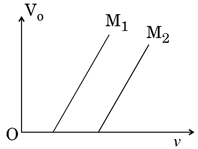Embibe Experts Solutions for Chapter: Dual Nature of Radiation and Matter, Exercise 1: cbse-2018
Embibe Experts Physics Solutions for Exercise - Embibe Experts Solutions for Chapter: Dual Nature of Radiation and Matter, Exercise 1: cbse-2018
Attempt the free practice questions on Chapter 11: Dual Nature of Radiation and Matter, Exercise 1: cbse-2018 with hints and solutions to strengthen your understanding. EMBIBE CHAPTER WISE PREVIOUS YEAR PAPERS FOR PHYSICS solutions are prepared by Experienced Embibe Experts.
Questions from Embibe Experts Solutions for Chapter: Dual Nature of Radiation and Matter, Exercise 1: cbse-2018 with Hints & Solutions
If the light of wavelength is incident on each of the metals given below, which ones will show photoelectric emission and why?
| Metal | Work Function(eV) |
| Na | 1.92 eV |
| K | 2.15 eV |
| Ca | 3.20 eV |
| Mo | 4.17 eV |
Why is wave theory of electromagnetic radiation is not able to explain photo electric effect? How does photon picture resolve this problem?
Plot a graph showing variation of de Broglie wavelength associated with a charged particle of mass , versus , where is the potential difference through which the particle is accelerated. How does this graph gives us the information regarding the magnitude of the charge of the particle?
Photons of energies and are successively incident on a metallic surface of work function . The ratio of kinetic energy of most energetic photoelectrons in the two cases will be
A proton and an electron have equal speeds. Find the ratio of de Broglie wavelengths associated with them.
The variation of the stopping potential with the frequency of the light incident on two different photosensitive surfaces M1 and M2 is shown in the figure. Identify the surface which has greater value of the work function.

Write two main observations of photoelectric effect experiment which could only be explained by Einstein's photoelectric equation.
Draw a graph showing variation of photocurrent with the anode potential of a photocell.
